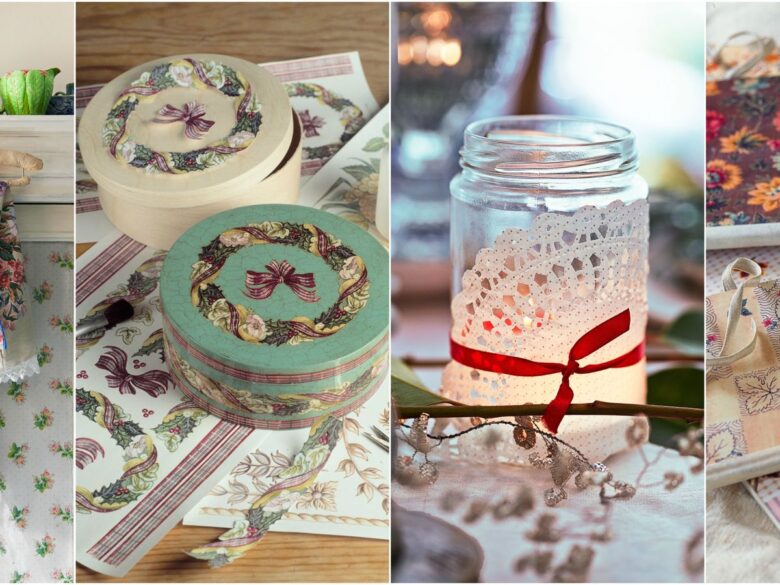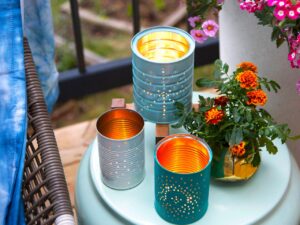When it comes to home decor, modern, minimalist styles are still popular, but retro items remain attractive. Instead, it becomes even more powerful as more and more people try to bring the warmth and nostalgia of a bygone era into their homes. Vintage handicrafts have a classic look that never goes out of fashion. They combine history and art to give the rooms a unique and welcoming feel. This article discusses some of the ancient crafts that can bring together the past and the present in the most beautiful way, adding more charm and character to your home.
Quilting: Creating Memories
Everyone in the family learns to quilt, and each quilt has its own unique design, colour, and texture that tells a story. You can display old quilts in different ways in your home, for example, as a tapestry on the wall, hung tightly on the sofa, or hung from the ceiling. By making your own quilt from old fabrics or patterns, you can add a personal touch to your room and make it feel warm and inviting.
Embroidery: The History of Thread
Embroidery comes from many countries around the world and is a versatile way to add old-world charm to your home decor. Embroidered items can be used to decorate everything, from pillowcases to wall art. They can have anything from intricate floral patterns to traditional folk patterns. Online or in antique stores, you can find old embroidery patterns that can be used to create new items that honour the rich history of the craft.
Macramé: A Knotted Home Feeling
Macramé, famous in the 1970s, is making a comeback with a dose of old-world charm. Rope tying is an art that can be used to make everything from rugs and curtains to wall hangings and plant hangers. Adding macramé to your home will give you a bohemian style and texture that will remind you of the crafts of the past.
Crocheting and Knitting: Warm and Comfortable
Crocheting and knitting are traditional hobbies that can be used for more than just clothing and accessories. With plaids, cushion covers, and tablecloths in vintage designs, you can create a cosy, handmade atmosphere in every room. Using period-appropriate yarn colours and patterns, these projects can fit into your vintage-inspired decor, adding comfort and style.
Paper Cutting: Style Layers
Paper cutting is the art of painting with paper cuts. It started in Europe in the 18th century. Featuring floral, pastoral and even Chinese-inspired patterns, this craft can breathe new life into old furniture, picture frames, and home decor. Using decoupage on things around the house can make them look old without having to actually buy antiques.
Making Candles: Looking Back
Candle-making used to be a necessity, but now it’s just a fun way to bring a cosy, old-fashioned vibe to any room. Just like lavender, rose, or vanilla, making candles with scents that remind you of the past can take you back in time. Placing candles in old tea cups, mason jars, or tin boxes can give them a more nostalgic look.
Furniture Restoration: Bringing the Past into the Present
Assembling old furniture is a fun hobby that not only preserves history but also gives your home a unique look. Furniture restoration can give each piece a unique style, whether you’re refinishing a weathered wood dresser, reupholstering a Victorian chair, or repainting a mid-century modern side table. These fixtures can become an eye-catcher in your room and tell their own story.
Lace Making: An Elegant and Refined Touch
The art of lacemaking is highly detailed, and the resulting patterns are loved for their delicate beauty. Add vintage lace to your interior, such as tablecloths, curtains, or display pieces, to make it look more elegant and stylish. Smaller pieces of lace can be framed as art or used to decorate other items, adding a touch of refined craftsmanship to your space.
Conclusion:
Using old crafts in your interior is a great way to honour the skills of the past while making the place feel like it’s yours alone. These crafts are a link to the past, an example of craftsmanship, and a testament to how much people still enjoy handmade things. Whether you sew, embroider, decoupage, or repair, every job you do adds character and history to your home. In a world where mass-produced goods are common, age-old crafts stand out as unique ways to showcase creativity and personal style. They can make your home a warm, comfortable, and beautiful place forever.
FAQs:



